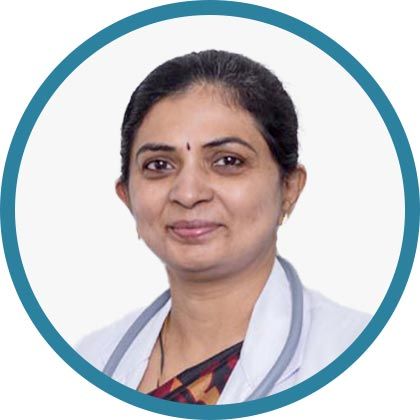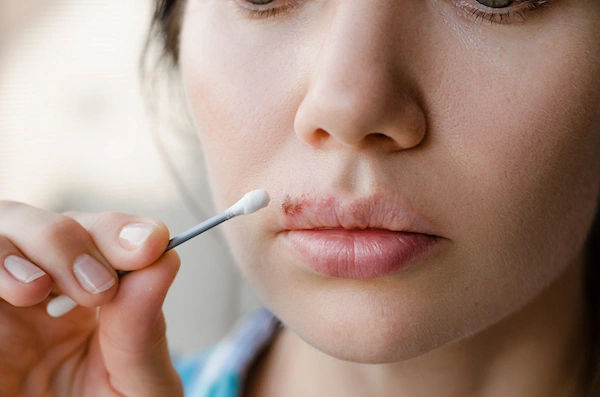6 Easy Steps to Lower Your Cholesterol Naturally
Learn 6 simple, science‑backed ways to lower cholesterol and boost heart health with smart food, movement, and habits. Includes FAQs and trusted sources.


Introduction
Cholesterol plays a big role in heart health. Your body needs some cholesterol, but too much low-density lipoprotein (LDL, the “bad” cholesterol) can build up in arteries and raise the risk of heart attack and stroke. The good news: many everyday changes can help lower cholesterol naturally and support your heart.
This guide walks you through six practical, science‑backed steps to lower cholesterol. You’ll find simple food swaps, easy activity tips, and habits that make a real difference. Whether you’re starting fresh or fine-tuning your routine, these strategies are safe, sustainable, and aligned with major medical organizations.
If you take cholesterol‑lowering medicine, lifestyle changes still matter. And if you’re just getting started, these steps can help you make real progress toward better heart health.
Step 1: Fill half your plate with fiber to lower cholesterol
Soluble fiber acts like a sponge in your digestive tract, helping trap cholesterol and carry it out of the body. Eating more fiber‑rich plants is one of the most reliable ways to lower LDL.
Great sources of soluble fiber include:
- Oats and barley (think oatmeal, oat bran, hulled barley)
- Beans, lentils, and peas
- Fruits such as apples, berries, pears, and citrus
- Vegetables like okra and eggplant
- Ground flaxseed and chia seeds
- Psyllium husk (often found in fiber cereals or supplements)
Tips
- Start breakfast with oatmeal, top with berries and a spoon of ground flaxseed.
- Add beans or lentils to salads, soups, tacos, or pasta.
- Choose whole‑grain bread and brown rice or barley instead of refined grains.
- If your diet is low in fiber, increase slowly and drink enough water to stay comfortable.
Optional helpers: Plant sterols/stanols (found in some fortified foods) and psyllium fiber supplements can modestly lower LDL when used consistently, especially alongside a heart‑healthy diet. Talk with your clinician if you’re considering supplements to ensure they fit your overall plan.
Step 2: Choose healthy fats for heart health (and skip trans fats)
Not all fats affect cholesterol the same way. Replacing saturated fat with unsaturated fats helps improve your cholesterol profile, while trans fats should be avoided.
Do more of
- Unsaturated fats: olive oil, canola oil, avocado, nuts (almonds, walnuts, pistachios), and seeds (sunflower, pumpkin, sesame).
- Cooking methods: sautéing in olive or canola oil, baking, grilling, steaming, and air‑frying.
- Snacking smart: a small handful of unsalted nuts, or hummus with veggies.
Do less of
- Saturated fats: fatty cuts of red meat, processed meats, butter, lard, coconut and palm oils, full‑fat dairy. Choose leaner proteins (skinless poultry, fish, beans), low‑fat or fat‑free dairy, and smaller portions of red meat.
- Trans fats: Often found in foods with “partially hydrogenated oils” on the ingredient list. Many countries have restricted these oils, but baked goods, fried foods, and some packaged snacks may still contain trans fats in some places. Trans fats raise LDL and lower HDL, so it’s best to avoid them.
Consult a Top General Physician
Step 3: Eat omega‑3 rich seafood twice a week
Omega‑3 fats support heart health and help lower triglycerides (another blood fat). They don’t lower LDL directly, but they’re still valuable for your heart.
Aim for two servings of fish per week, prioritizing
- Salmon, trout, sardines, herring, mackerel, anchovies
- If you don’t eat fish, add plant sources of omega‑3s such as walnuts, chia, hemp, and ground flaxseed. These are helpful, though they’re not a direct substitute for marine omega‑3s.
Simple ideas
- Bake salmon with lemon and herbs; serve with barley and a veggie side.
- Make tuna (packed in water or olive oil) with Greek yogurt, mustard, celery, and dill.
- Grill or air‑fry fish tacos with cabbage slaw and black beans.
Step 4: Move more, most days
Regular physical activity improves cholesterol numbers, helps manage weight and blood pressure, and supports overall heart health.
Targets to aim for
- Aerobic activity: at least 150 minutes per week of moderate‑intensity movement (like brisk walking, cycling on level ground, water aerobics) or 75 minutes of vigorous activity (like running).
- Muscle strengthening: activities that work major muscles at least 2 days per week (body‑weight moves, resistance bands, or weights).
Make it doable
- Break it up: three 10‑minute brisk walks count the same as one 30‑minute session.
- Stack habits: walk during calls, take the stairs, park farther away, or do a short routine before TV time.
- Mix it up for motivation: try dancing, swimming, pickleball, or hiking.
- Track your steps or minutes to stay consistent.
Regular movement can raise HDL (“good” cholesterol), lower triglycerides, and improve LDL patterns, especially when combined with a healthy eating plan.
Step 5: Reach a healthy weight and waist
If you carry extra weight, even a modest loss can improve your cholesterol and triglycerides. Many people see meaningful changes with a 5–10% weight reduction, and it doesn’t have to happen all at once.
Practical tips
- Build meals around plants and lean proteins to feel full on fewer calories.
- Prioritize protein and fiber at each meal and snack.
- Watch portions of calorie‑dense foods (oils, nuts, cheese) while keeping them in the plan for satisfaction.
- Choose water, unsweetened tea, or coffee in place of sugary drinks.
- Get 7–9 hours of quality sleep and manage stress; both influence hunger, cravings, and consistency with healthy habits.
If weight loss is a goal, gradual and steady changes are more likely to stick,and they’re better for heart health over the long term.
Step 6: Quit smoking and drink less alcohol
- Quit smoking: Smoking damages blood vessels and lowers HDL. Quitting starts improving heart health quickly and supports better cholesterol levels over time. Ask your clinician about proven tools like counseling, nicotine replacement, and medications; support dramatically increases success rates.
- Alcohol: If you don’t drink, there’s no health reason to start. If you do, keep it moderate. Drinking too much can raise triglycerides and blood pressure and add extra calories. People with high triglycerides may need to avoid alcohol altogether. If you have questions about alcohol and your cholesterol, talk with your healthcare professional.
When lifestyle isn’t enough? test, track, and team up
Some people need medication in addition to lifestyle changes, especially if LDL is very high, triglycerides are elevated, there’s diabetes, or if there’s a strong personal or family history of early heart disease. Medications like statins are well‑studied and lower the risk of heart attack and stroke when used appropriately.
Know your numbers
- A fasting or non‑fasting lipid panel measures LDL, HDL, total cholesterol, and triglycerides.
- Adults 20+ at low risk are often screened about every 4–6 years; people with risk factors may need testing more often. Your clinician will personalize this schedule.
Use your results to guide small adjustments, then recheck after a period of consistent changes. Many clinicians reassess in a few months to see how lifestyle steps are working.Consult a Top General Physician
Consult a Top General Physician

Dr. Rajib Ghose
General Physician/ Internal Medicine Specialist
26 Years • MBBS
Kolkata
B Ghose Foundation Doctor's Chamber, Kolkata
(50+ Patients)

Dr. Amitava Ray
General Physician/ Internal Medicine Specialist
20 Years • MBBS, DNB (Family Med.), PGDHHM, FRSTM&H. Certificate in Geriatric medicine & Diabetes Management.
Kolkata
Apollo Multispeciality Hospitals , Kolkata, Kolkata
(600+ Patients)

Dr. Rajib Ghose
General Physician/ Internal Medicine Specialist
25 Years • MBBS
East Midnapore
VIVEKANANDA SEBA SADAN, East Midnapore

Dr Vinay Kumar A V
Nephrologist
8 Years • MBBS, MD - General Medicine, DM - Nephrology
Bilaspur
Apollo Hospitals Seepat Road, Bilaspur

Dr. Haripriya Jagadeesh
General Physician/ Internal Medicine Specialist
24 Years • MBBS, AB (Family Physician)
Chennai
Apollo Hospitals Greams Road, Chennai
Consult a Top General Physician

Dr. Rajib Ghose
General Physician/ Internal Medicine Specialist
26 Years • MBBS
Kolkata
B Ghose Foundation Doctor's Chamber, Kolkata
(50+ Patients)

Dr. Amitava Ray
General Physician/ Internal Medicine Specialist
20 Years • MBBS, DNB (Family Med.), PGDHHM, FRSTM&H. Certificate in Geriatric medicine & Diabetes Management.
Kolkata
Apollo Multispeciality Hospitals , Kolkata, Kolkata
(600+ Patients)

Dr. Rajib Ghose
General Physician/ Internal Medicine Specialist
25 Years • MBBS
East Midnapore
VIVEKANANDA SEBA SADAN, East Midnapore

Dr Vinay Kumar A V
Nephrologist
8 Years • MBBS, MD - General Medicine, DM - Nephrology
Bilaspur
Apollo Hospitals Seepat Road, Bilaspur

Dr. Haripriya Jagadeesh
General Physician/ Internal Medicine Specialist
24 Years • MBBS, AB (Family Physician)
Chennai
Apollo Hospitals Greams Road, Chennai
More articles from General Medical Consultation
Frequently Asked Questions
Q1: How quickly can I lower cholesterol with lifestyle changes?
Some improvements can show up in a few weeks, and more meaningful changes usually appear over a few months of consistent habits. Many clinicians recheck cholesterol after about 3 months of diet and activity changes. Keep going, benefits build over time.
Q2: What foods are best to lower LDL cholesterol?
Focus on:
Soluble fiber foods: oats, barley, beans, lentils, apples, citrus, okra, eggplant, ground flaxseed, psyllium.
Healthy fats: olive oil, nuts, seeds, avocado; choose fish twice a week.
Whole, minimally processed foods: vegetables, fruits, whole grains, legumes.
Limit saturated fats (fatty meats, full‑fat dairy) and avoid trans fats. These patterns help lower LDL and support heart health.
Q3: Are eggs okay if I’m trying to lower cholesterol?
For many people, dietary cholesterol from eggs has less impact on blood cholesterol than saturated fat does. Eggs can fit into a heart‑healthy diet when eaten in moderation and within an overall pattern rich in plants and unsaturated fats. People with diabetes or established heart disease should discuss egg intake with their clinician to personalize advice.
Q4: Do supplements help lower cholesterol?
Some can help when used wisely:
Plant sterols/stanols (about 2 grams/day from fortified foods or supplements) can modestly lower LDL.
Psyllium husk adds soluble fiber that helps reduce LDL.
Fish oil supplements may lower triglycerides; prescription‑strength products are used under medical supervision.
Use supplements carefully; quality varies, and products like red yeast rice can act like statins and may have safety or purity concerns. Always check with your clinician or pharmacist.
Q5: How often should I check my cholesterol, and will I need medication?
Many adults at low risk are screened about every 4–6 years, and more often if risk factors are present (like diabetes, high blood pressure, smoking, strong family history, or prior heart disease). If your LDL is high or your overall risk is elevated, your clinician may recommend medication along with lifestyle changes to better protect against heart attack and stroke.



.webp)
